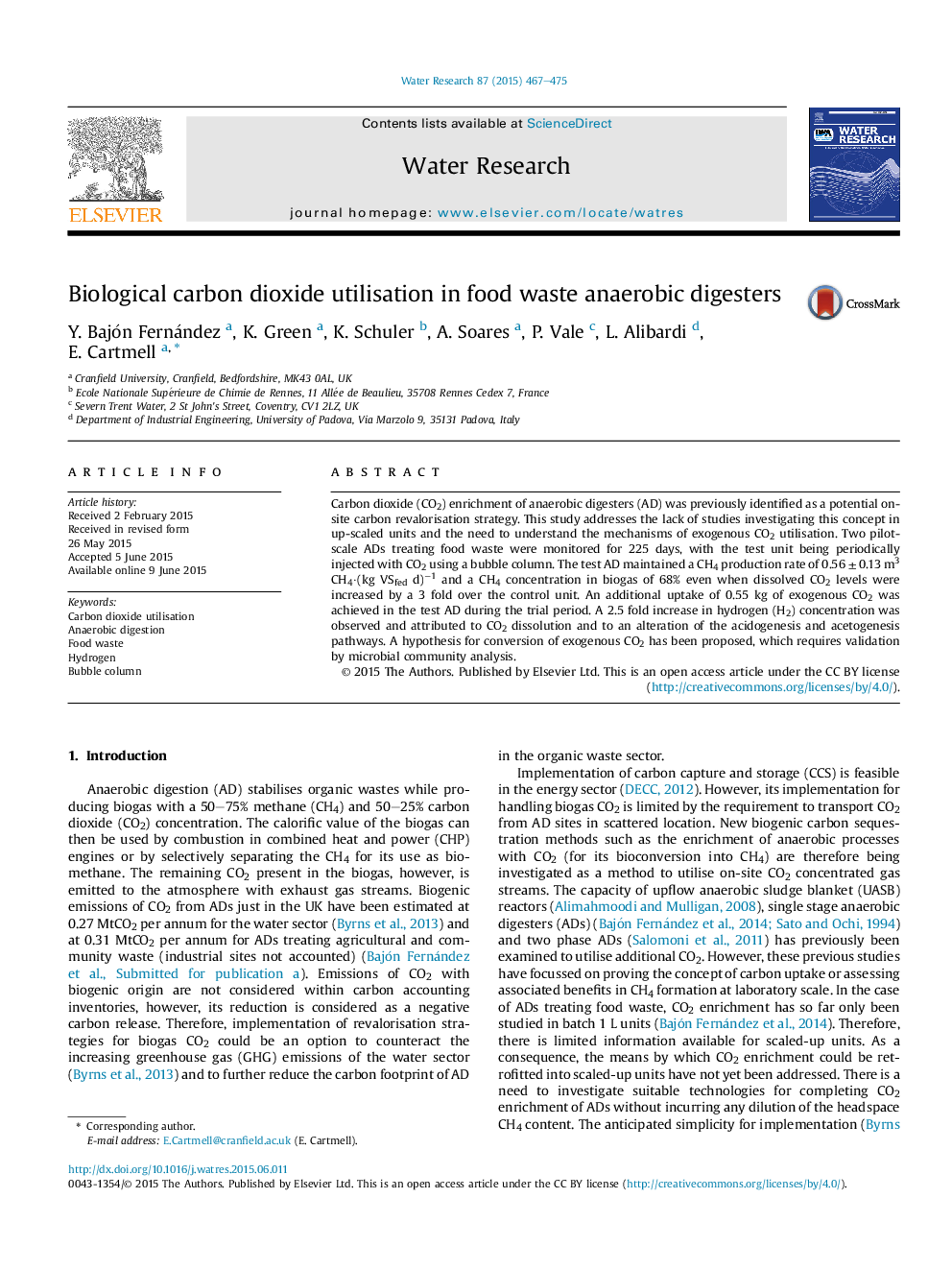| Article ID | Journal | Published Year | Pages | File Type |
|---|---|---|---|---|
| 6366045 | Water Research | 2015 | 9 Pages |
â¢Utilisation of exogenous CO2 in ADs was investigated.â¢A pilot-scale AD with CO2 injection treating food waste operated for the first time.â¢Injection of CO2 with a bubble column achieved without diluting the AD's headspace.â¢Concentration of H2 increased by 2.5 fold after four CO2 injections.â¢A mechanism of CO2 utilisation has been proposed.
Carbon dioxide (CO2) enrichment of anaerobic digesters (AD) was previously identified as a potential on-site carbon revalorisation strategy. This study addresses the lack of studies investigating this concept in up-scaled units and the need to understand the mechanisms of exogenous CO2 utilisation. Two pilot-scale ADs treating food waste were monitored for 225 days, with the test unit being periodically injected with CO2 using a bubble column. The test AD maintained a CH4 production rate of 0.56 ± 0.13 m3 CH4·(kg VSfed d)â1 and a CH4 concentration in biogas of 68% even when dissolved CO2 levels were increased by a 3 fold over the control unit. An additional uptake of 0.55 kg of exogenous CO2 was achieved in the test AD during the trial period. A 2.5 fold increase in hydrogen (H2) concentration was observed and attributed to CO2 dissolution and to an alteration of the acidogenesis and acetogenesis pathways. A hypothesis for conversion of exogenous CO2 has been proposed, which requires validation by microbial community analysis.
Graphical abstractDownload high-res image (186KB)Download full-size image
